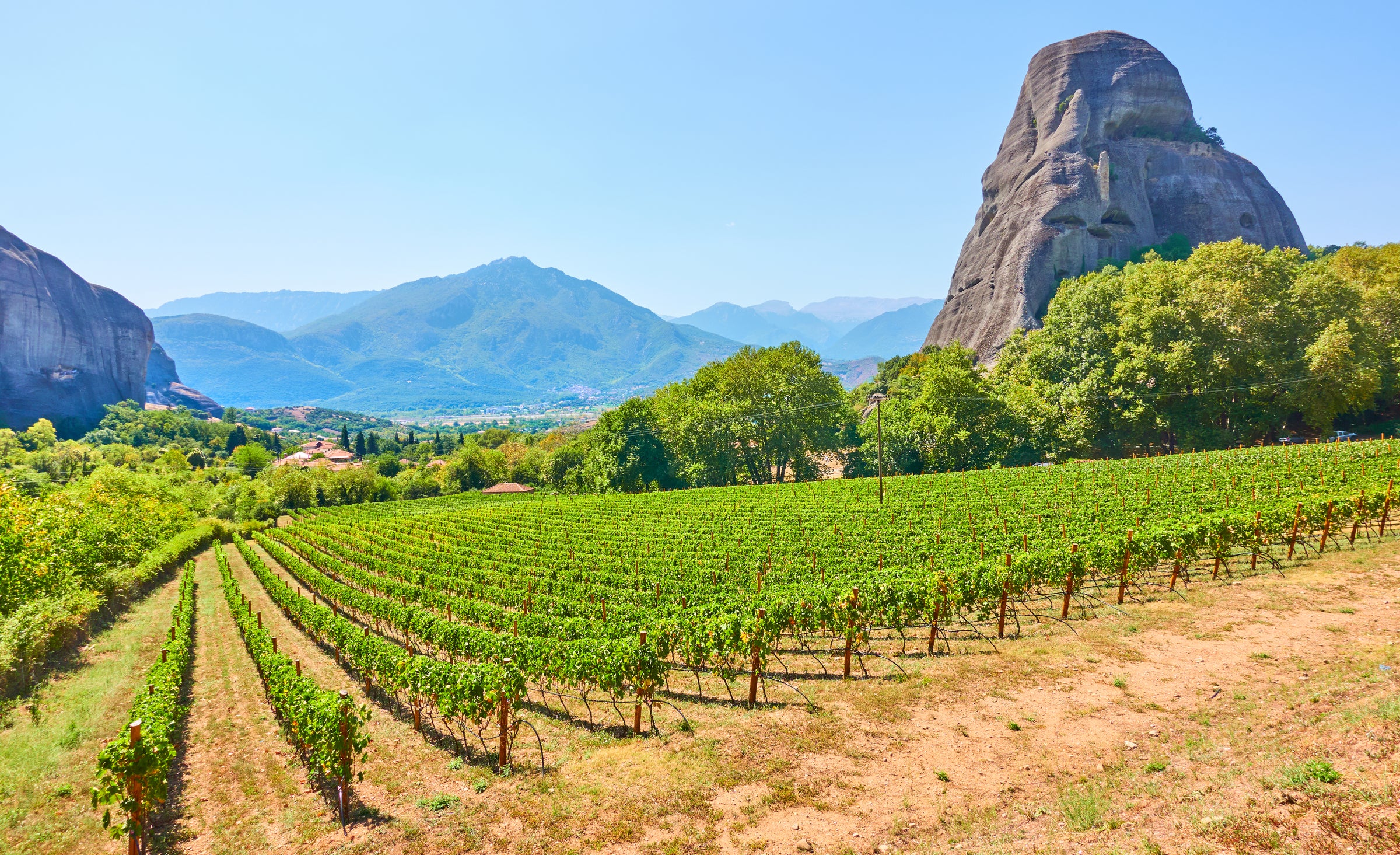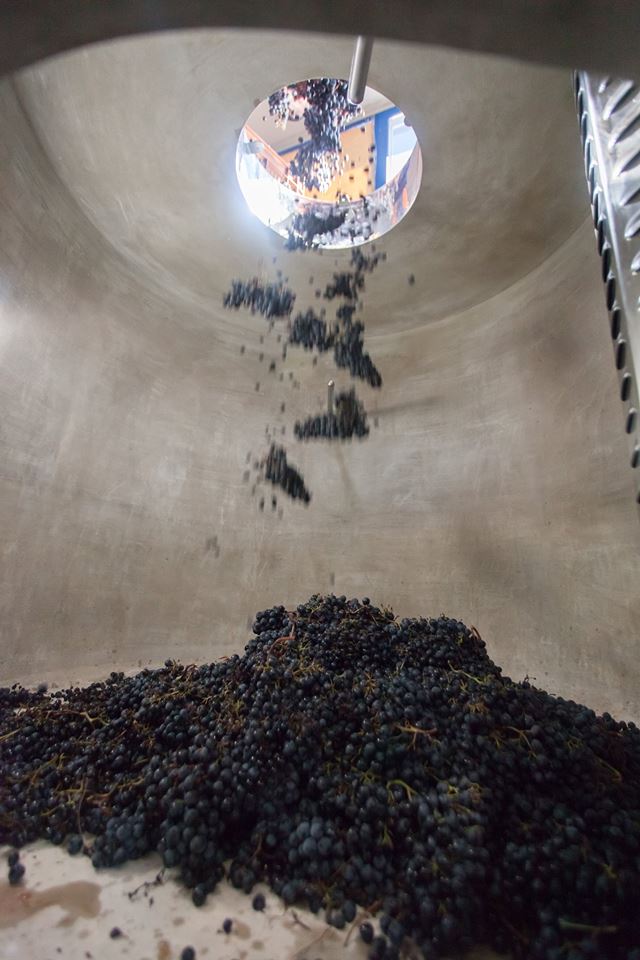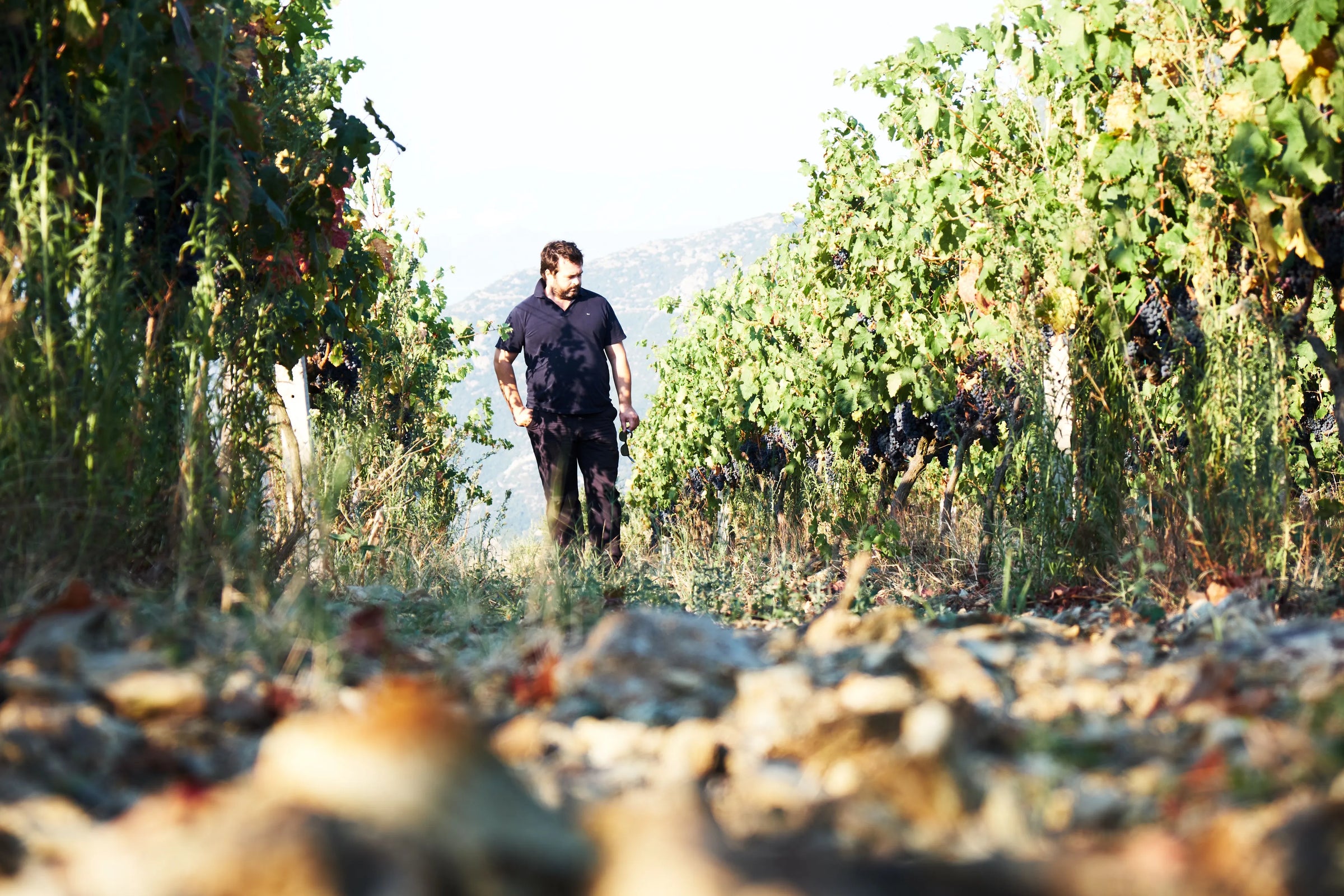Do you remember when Mr. Miyagi was teaching The Karate Kid how to punch? The key was to “focus power.”
Certain wines do that, too – they may be moderate in weight, but their acid and mineral qualities lend them focus and incredible depth. There’s a precision to how they strike your palate, and with that precision comes power. So it is with this bracing Greek white from the Aegean island of Santorini, an immensely satisfying addition to any summer table. And, considering the incredibly low yields, labor intensive farming, and deep pleasure brought to your senses, it’s safe to say that the wines of Santorini are some of the most underpriced in the world. These focused, powerful whites are some of our favorites. You must try one to understand.
Sometime between 1645 and 1500 BC, the volcanic eruption of Thera on modern-day Santorini became one of the largest seismic events in recorded history. The eruption practically wiped out the Minoan people and left behind a crescent-like caldera in the midst of the Aegean. Believed to be over 100 times more powerful than the 1980 eruption of Mount St. Helens, the blast, among other natural fallout, left behind hundreds of meters of volcanic ash, which lends the magnificent minerality to Assyrtiko that is inimitable anywhere else in the world. Sometimes I’m amazed that we’re able to offer wines like this – wines from places so extreme and remote it seems impossible that they’d be consumed anywhere other than where they’re made. But here we are, offering up an evocative white from the volcanic soils of Santorini, where seaborne breezes are so fierce that growers must fashion their vines into short, basket-like coils instead of training them on trellises. Vineyards on Santorini, rooted in infertile, ashy sands, look like rows of large nests, in which you might find dinosaur eggs instead of grapes. Most vines here are very old, sometimes hundreds of years, as Santorini is one corner of the world that never had to contend with the phylloxera louse that destroyed most of Europe’s vineyards generations ago (most of the places that escaped phylloxera had sandy and/or volcanic soils).
It rarely if ever rains on Santorini, and there’s no irrigation, so the vines grab what moisture they can from the sea air. This became readily apparent on my first taste of this wine, which is made from the indigenous grape Assyrtiko (ah-SEER-tee-ko) and aged in stainless steel: there’s an unmistakable saline quality on the palate mingling with an almost smoky minerality, these savory qualities are checked by notes of yellow peach, golden apple, and lemon rind. It is racy with a serious deceptive amount of texture, depth and length here. As we enter the dog days of summer, the food choice for this white is kind of a no-brainer: simple, grilled, white-fleshed fish – whole branzino or porgy would be great – with a drizzle of good olive oil and maybe a generous heap of cherry tomatoes. If you can’t get to the actual Santorini, this will take you most of the way there. Enjoy.






